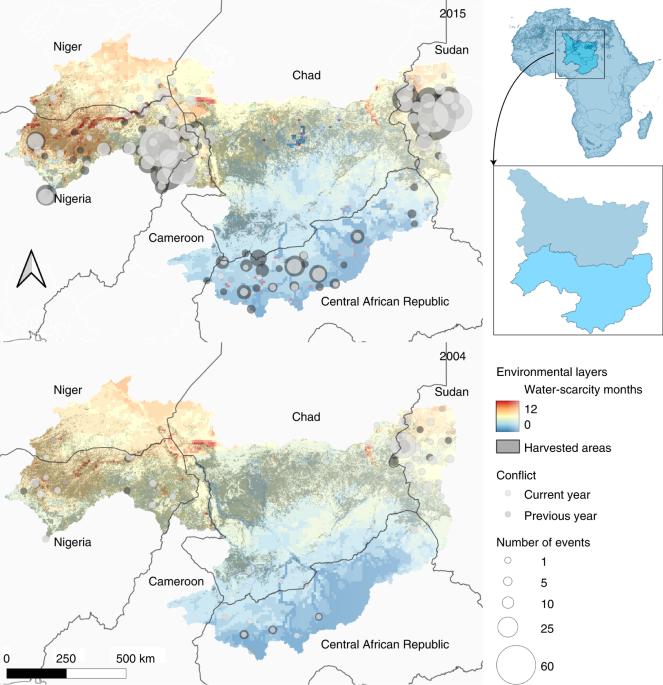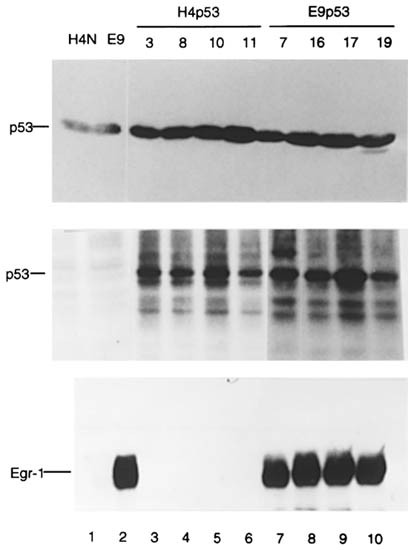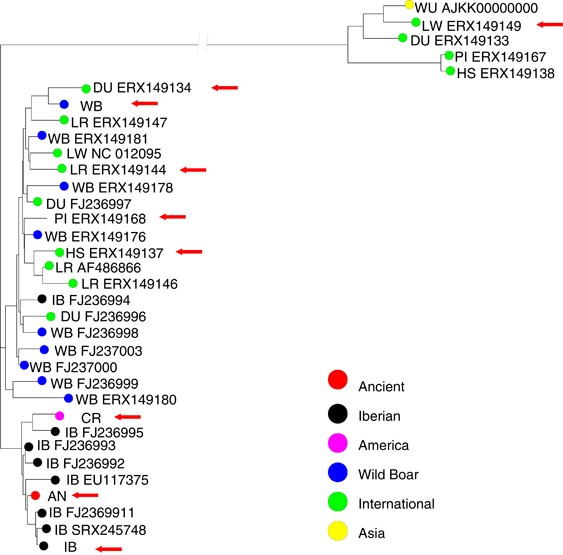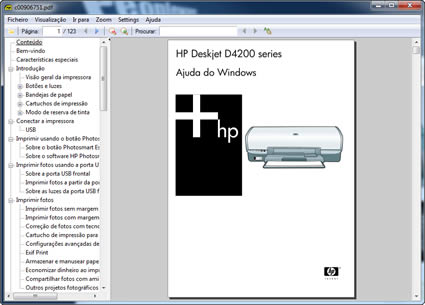
- Select a language for the TTS:
- UK English Female
- UK English Male
- US English Female
- US English Male
- Australian Female
- Australian Male
- Language selected: (auto detect) - EN
Play all audios:
ABSTRACT The role of water resources in conflict has been the centre of a polarized scientific debate on the connections between environmental and social sustainability. We investigate
whether and how water availability, also in relation to water demand, increases the likelihood of violent conflict, and we analyse how hydrological factors influence social conflict dynamics
involving non-state armed groups in the Lake Chad Basin. We combine hydrological and biophysical factors with information on socio-political processes. We use a novel physically based
agro-hydrological model to produce water-availability and water-demand indicators to explore the conflict potential. By coupling a critical modelling perspective with a novel rendition of
hydrological dynamics and statistical tools, we explore water–conflict interconnections in a broader hydrosocial framework. Our results show that, although water scarcity alone does not
directly drive violent conflict, complex water-related interdependencies exist on multiple space–time scales. Analytical integration of fine-scale hydrological indicators may help
deconstruct both mechanistic and relativist narratives, improve understanding of socio-hydrological complexity and move towards a comprehensive vision of socially and environmentally
sustainable use of water and land. Access through your institution Buy or subscribe This is a preview of subscription content, access via your institution ACCESS OPTIONS Access through your
institution Access Nature and 54 other Nature Portfolio journals Get Nature+, our best-value online-access subscription $29.99 / 30 days cancel any time Learn more Subscribe to this journal
Receive 12 digital issues and online access to articles $119.00 per year only $9.92 per issue Learn more Buy this article * Purchase on SpringerLink * Instant access to full article PDF Buy
now Prices may be subject to local taxes which are calculated during checkout ADDITIONAL ACCESS OPTIONS: * Log in * Learn about institutional subscriptions * Read our FAQs * Contact customer
support SIMILAR CONTENT BEING VIEWED BY OTHERS EXPLORING THE WATER–FOOD NEXUS REVEALS THE INTERLINKAGES WITH URBAN HUMAN CONFLICTS IN CENTRAL AMERICA Article 06 April 2023 DIAGNOSING
CHALLENGES AND SETTING PRIORITIES FOR SUSTAINABLE WATER RESOURCE MANAGEMENT UNDER CLIMATE CHANGE Article Open access 17 January 2022 OVER-RELIANCE ON WATER INFRASTRUCTURE CAN HINDER CLIMATE
RESILIENCE IN PASTORAL DRYLANDS Article Open access 16 February 2024 DATA AVAILABILITY All data inputs to the analysis in this study were retrieved from publicly available sources that are
cited within the text. Results that are additional to those provided in the text and in the supplementary materials are available from the authors upon reasonable request. CODE AVAILABILITY
The code for the spatial econometric analysis is available from the authors upon reasonable request. REFERENCES * Ban, K.-m. _A Climate Culprit In Darfur_ (United Nations Secretary-General,
2007); https://www.un.org/sg/en/content/sg/articles/2007-06-16/climate-culprit-darfur * Serageldin, I. Water wars? A talk with Ismail Serageldin. _World Policy J._ 26, 25–31 (2009). Article
Google Scholar * Adger, W. N. et al. in _Climate Change 2014: Impacts, Adaptation, and Vulnerability: Part A: Global and Sectoral Aspects_ (eds Field, C. B. et al.) 755–791 (Cambridge
Univ. Press, 2014); https://doi.org/10.1017/CBO9781107415379.017 * WWAP _The United Nations World Water Development Report 2016: Water and Jobs_ (UNESCO, 2016). * Burke, M. B., Miguel, E.,
Satyanath, S., Dykema, J. A. & Lobell, D. B. Warming increases the risk of civil war in Africa. _Proc. Natl Acad. Sci. USA_ 106, 20670–20674 (2009). Article CAS Google Scholar *
Hsiang, S. M., Burke, M. & Miguel, E. Quantifying the influence of climate on human conflict. _Science_ 341, 1235367 (2013). Article Google Scholar * Gleick, P. H. Water, drought,
climate change, and conflict in Syria. _Weather Clim. Soc._ 6, 331–340 (2014). Article Google Scholar * O’Loughlin, J., Linke, A. M. & Witmer, F. D. W. Modeling and data choices sway
conclusions about climate–conflict links. _Proc. Natl Acad. Sci. USA_ 111, 2054–2055 (2014). Article Google Scholar * Schleussner, C. F., Donges, J. F., Donner, R. V. & Schellnhuber,
H. J. Armed-conflict risks enhanced by climate-related disasters in ethnically fractionalized countries. _Proc. Natl Acad. Sci. USA_ 113, 9216–9221 (2016). Article CAS Google Scholar *
Von Uexkull, N., Croicu, M., Fjelde, H. & Buhaug, H. Civil conflict sensitivity to growing-season drought. _Proc. Natl Acad. Sci. USA_ 113, 12391–12396 (2016). Article Google Scholar *
Roche, K. R., Müller-Itten, M., Dralle, D. N., Bolster, D. & Müller, M. F. Climate change and the opportunity cost of conflict. _Proc. Natl Acad. Sci. USA_ 117, 1935–1940 (2020).
Article CAS Google Scholar * Buhaug, H. Climate not to blame for African civil wars. _Proc. Natl Acad. Sci. USA_ 107, 16477–16482 (2010). Article CAS Google Scholar * Hsiang, S. M.
& Meng, K. C. Reconciling disagreement over climate–conflict results in Africa. _Proc. Natl Acad. Sci. USA_ 111, 2100–2103 (2014). Article CAS Google Scholar * Selby, J. &
Hoffmann, C. Beyond scarcity: rethinking water, climate change and conflict in the Sudans. _Glob. Environ. Change_ 29, 360–370 (2014). Article Google Scholar * Selby, J. Positivist climate
conflict research: a critique. _Geopolitics_ 19, 829–856 (2014). Article Google Scholar * Dell’Angelo, J., D’Odorico, P., Rulli, M. C. & Marchand, P. The tragedy of the grabbed
commons: coercion and dispossession in the global land rush. _World Dev._ 92, 1–12 (2017). Article Google Scholar * Scheidel, A., Temper, L., Demaria, F. & Martínez-Alier, J.
Ecological distribution conflicts as forces for sustainability: an overview and conceptual framework. _Sustain. Sci._ 13, 585–598 (2018). Article Google Scholar * Bernauer, T., Böhmelt, T.
& Koubi, V. Environmental changes and violent conflict. _Environ. Res. Lett._ 7, 015601 (2012). Article Google Scholar * Kallis, G. & Zografos, C. Hydro-climatic change, conflict
and security. _Climatic Change_ 123, 69–82 (2014). Article Google Scholar * Barnaby, W. Do nations go to war over water? _Nature_ 458, 282–283 (2009). Article CAS Google Scholar * Katz,
D. Hydro-political hyperbole: examining incentives for overemphasizing the risks of water wars. _Glob. Environ. Polit._ 11, 12–35 (2011). Article Google Scholar * Dell’Angelo, J.,
D’Odorico, P. & Rulli, M. C. The neglected costs of water peace. _WIREs Water_ 5, e1316 (2018). Google Scholar * Wolf, A. T., Yoffe, S. B. & Giordano, M. International waters:
identifying basins at risk. _Water Policy_ 5, 29–60 (2003). Article Google Scholar * Wolf, A. T. Shared waters: conflict and cooperation. _Annu. Rev. Environ. Resour._ 32, 241–269 (2007).
Article Google Scholar * Gleick, P. H. Water and conflict: fresh water resources and international security. _Int. Secur._ 18, 79–112 (1993). Article Google Scholar * Selby, J. Oil and
water: the contrasting anatomies of resource conflicts. _Gov. Oppos._ 40, 200–224 (2005). Article Google Scholar * Allan, J. A. Virtual water: a strategic resource. _Ground Water_ 36,
545–546 (1998). Article CAS Google Scholar * D’Odorico, P. et al. Global virtual water trade and the hydrological cycle: patterns, drivers, and socio-environmental impacts. _Environ. Res.
Lett._ 14, 053001 (2019). Article Google Scholar * von Uexkull, N. & Buhaug, H. Security implications of climate change: A decade of scientific progress. _J. Peace Res._ 58, 3–17
(2021). Article Google Scholar * Rodríguez-Labajos, B. & Martínez-Alier, J. Political ecology of water conflicts. _WIREs Water_ 2, 537–558 (2015). Article Google Scholar * Mach, K.
J. et al. Climate as a risk factor for armed conflict. _Nature_ 571, 193–197 (2019). Article CAS Google Scholar * Nett, K. & Rüttinger, L. _Insurgency, Terrorism and Organised Crime
in a Warming Climate: Analysing the Links Between Climate Change and Non-state Armed Groups_ (Adelphi, 2016). * Schwartz, D. M., Deligiannis, T. & Homer-dixon, T. F. The environment and
violent conflict: a response to Gleditsch’s critique and some suggestions for future research. _Environ. Change Secur. Proj. Rep._ 6, 77–94 (2000). Google Scholar * Freeman, L.
Environmental change, migration, and conflict in Africa: a critical examination of the interconnections. _J. Environ. Dev._ 26, 351–374 (2017). Article Google Scholar * Daoust, G. &
Selby, J. Understanding the politics of climate security policy discourse: the case of the Lake Chad Basin. _Geopolitics_ https://doi.org/10.1080/14650045.2021.2014821 (2021). * Coe, M. T.
& Foley, A. Human and natural impacts on the water resources of the Lake Chad Basin. _J. Geophys. Res._ 106, 3349–3356 (2001). Article Google Scholar * Zhu, W., Yan, J. & Jia, S.
Monitoring recent fluctuations of the southern pool of Lake Chad using multiple remote sensing data: implications for water balance analysis. _Remote Sens._ 9, 1032 (2017). Article Google
Scholar * Hendrix, C. S. The streetlight effect in climate change research on Africa. _Glob. Environ. Change_ 43, 137–147 (2017). * Adams, C., Ide, T., Barnett, J. & Detges, A. Sampling
bias in climate–conflict research. _Nat. Clim. Change_ 8, 200–203 (2018). Article Google Scholar * Okpara, U. T., Stringer, L. C., Dougill, A. J. & Bila, M. D. Conflicts about water
in Lake Chad: are environmental, vulnerability and security issues linked? _Prog. Dev. Stud._ 15, 308–325 (2015). Article Google Scholar * Cook, D. The rise of Boko Haram in Nigeria. _CTC
Sentin._ 4, 3–5 (2011). Google Scholar * Carsten, P. & Kingimi, A. Islamic State ally stakes out territory around Lake Chad. _Reuters_ (29 April 2018). * Herbert, S., Dukhan, N. &
Debos, M. _State Fragility in the Central African Republic: What Prompted the 2013 Coup?_ (GSDRC, 2013). * Ingerstad, G. _Central African Republic—Trapped in a Cycle of Violence? Causes,
Conflict Dynamics and Prospects for Peace_ (FOI, 2014). * Zellman, A. (2006, March). The Janjaweed in the Sudan: A case of chronic paramilitarism. Paper presented at the annual meeting of
the International Studies Association, Town & Country Resort and Convention Center, San Diego, California, USA. * Kloos, J., Gebert, N., Rosenfeld, T. & Renaud, F. G. _Climate
Change, Water Conflicts and Human Security: Regional Assessment and Policy Guidelines for the Mediterranean, Middle East and Sahel_ (UNU-EHS, 2013). * Hoch, J. M. et al. Projecting armed
conflict risk in Africa towards 2050 along the SSP–RCP scenarios: a machine learning approach. _Environ. Res. Lett._ 16, 124068 (2021). Article Google Scholar * Harari, M. & Ferrara,
E. L. A. Conflict, climate, and cells: a disaggregated analysis. _Rev. Econ. Stat._ 100, 594–608 (2018). Article Google Scholar * Couttenier, M. & Soubeyran, R. Drought and civil war
in sub-Saharan Africa. _Econ. J._ 124, 201–244 (2014). Article Google Scholar * Seter, H., Theisen, O. M. & Schilling, J. All about water and land? Resource-related conflicts in East
and West Africa revisited. _GeoJournal_ 83, 169–187 (2018). Article Google Scholar * Abel, G. J., Brottrager, M., Crespo Cuaresma, J. & Muttarak, R. Climate, conflict and forced
migration. _Glob. Environ. Change_ 54, 239–249 (2019). Article Google Scholar * Raleigh, C., Linke, A., Hegre, H. & Karlsen, J. Introducing ACLED: an armed conflict location and event
dataset. _J. Peace Res._ 47, 651–660 (2010). Article Google Scholar * Lambert, D. Zero-inflated Poisson regression, with an application to defects in manufacturing. _Technometrics_ 34,
1–14 (1992). Article Google Scholar * _Global International Waters Assessment (GIWA)—Regional Assessment 43—Lake Chad Basin_ (UNEP, 2004). * Rosa, L., Chiarelli, D. D., Rulli, M. C.,
Dell’Angelo, J. & D’Odorico, P. Global agricultural economic water scarcity. _Sci. Adv._ 6, eaaz6031 (2020). Article Google Scholar * Ide, T. Why do conflicts over scarce renewable
resources turn violent? A qualitative comparative analysis. _Glob. Environ. Change_ 33, 61–70 (2015). Article Google Scholar * Ide, T., Brzoska, M., Donges, J. F. & Schleussner, C. F.
Multi-method evidence for when and how climate-related disasters contribute to armed conflict risk. _Glob. Environ. Change_ 62, 102063 (2020). Article Google Scholar * Wesselink, A., Kooy,
M. & Warner, J. Socio-hydrology and hydrosocial analysis: toward dialogues across disciplines. _WIREs Water_ 4, e1196 (2017). Article Google Scholar * Funtowicz, S. O. & Ravetz,
J. R. The worth of a songbird: ecological economics as a post-normal science. _Ecol. Econ._ 10, 197–207 (1994). Article Google Scholar * Chiarelli, D. D. et al. The green and blue crop
water requirement WATNEEDS model and its global gridded outputs. _Sci. Data_ 7, 273 (2020). Article Google Scholar * Mekonnen, M. M. & Hoekstra, A. Y. The green, blue and grey water
footprint of crops and derived crop products. _Hydrol. Earth Syst. Sci._ 15, 1577–1600 (2011). Article Google Scholar * _Open Spatial Demographic Data and Research_ (WorldPop, 2015);
https://www.worldpop.org/ * Raleigh, C., Choi, H. J. & Wigmore-Shepherd, D. Inclusive conflict? Competitive clientelism and the rise of political violence. _Rev. Int. Stud._
https://doi.org/10.1017/S0260210521000218 (2021). * _Land Cover CCI Product User Guide Version 2_ (ESA, 2017); https://maps.elie.ucl.ac.be/CCI/viewer/download/ESACCI-LC-Ph2-PUGv2_2.0.pdf *
Wucherpfennig, J., Weidmann, N. B., Girardin, L., Cederman, L. E. & Wimmer, A. Politically relevant ethnic groups across space and time: introducing the GeoEPR dataset. _Confl. Manage.
Peace Sci._ 28, 423–437 (2011). Article Google Scholar * Arab, A. Spatial and spatio-temporal models for modeling epidemiological data with excess zeros. _Int. J. Environ. Res. Public
Health_ 12, 10536–10548 (2015). Article CAS Google Scholar * Rue, H., Martino, S. & Chopin, N. Approximate Bayesian inference for latent Gaussian models by using integrated nested
Laplace approximations. _J. R. Stat. Soc. B_ 71, 319–392 (2007). Article Google Scholar * Mann, H. B. & Whitney, D. R. On a test of whether one of two random variables is
stochastically larger than the other. _Ann. Math. Stat._ 18, 50–60 (1947). Article Google Scholar * Lehner, B. & Grill, G. Global river hydrography and network routing: baseline data
and new approaches to study the world’s large river systems. _Hydrol. Process._ 27, 2171–2186 (2013). Article Google Scholar Download references ACKNOWLEDGEMENTS J.D. and M.C.R.
acknowledge support from the European Union’s Horizon 2020 research and innovation programme under the Marie Skłodowska-Curie Action (MSCA) Innovative Training Network (ITN) grant agreement
no. 861509 – NEWAVE. M.C.R. and N.G. are supported by ENI Enrico Mattei Foundation (FEEM), Cariplo Foundation (SusFeed project 0737 CUP D49H170000300007) and Regione Lombardia (RUD0CONV01 /
ASSO project D44I20002000002). M.C.R., N.G. and D.D.C. are supported by the European Commission’s PRIMA joint programme, under project ‘NEXUS-NESS’ (CUP D49J21005050006). AUTHOR INFORMATION
AUTHORS AND AFFILIATIONS * Department of Civil and Environmental Engineering, Politecnico di Milano, Milan, Italy Nikolas Galli, Davide Danilo Chiarelli & Maria Cristina Rulli *
Department of Environmental Policy Analysis, Institute for Environmental Studies, IVM, Vrije Universiteit Amsterdam, Amsterdam, The Netherlands Jampel Dell’Angelo * Department of
Mathematics, Politecnico di Milano, Milan, Italy Ilenia Epifani Authors * Nikolas Galli View author publications You can also search for this author inPubMed Google Scholar * Jampel
Dell’Angelo View author publications You can also search for this author inPubMed Google Scholar * Ilenia Epifani View author publications You can also search for this author inPubMed Google
Scholar * Davide Danilo Chiarelli View author publications You can also search for this author inPubMed Google Scholar * Maria Cristina Rulli View author publications You can also search
for this author inPubMed Google Scholar CONTRIBUTIONS M.C.R., N.G. and J.D. designed research. I.E., N.G. and D.D.C. performed the analysis. M.C.R., N.G. and J.D. wrote the article. I.E. and
D.D.C. conducted review and editing. CORRESPONDING AUTHOR Correspondence to Maria Cristina Rulli. ETHICS DECLARATIONS COMPETING INTERESTS The authors declare no competing interests. PEER
REVIEW PEER REVIEW INFORMATION _Nature Sustainability_ thanks John O’Loughlin and the other, anonymous, reviewer(s) for their contribution to the peer review of this work. ADDITIONAL
INFORMATION PUBLISHER’S NOTE Springer Nature remains neutral with regard to jurisdictional claims in published maps and institutional affiliations. SUPPLEMENTARY INFORMATION SUPPLEMENTARY
INFORMATION Supplementary Methods, Results and Figs. 1–3. SUPPLEMENTARY TABLES Spatial econometric model covariates descriptive statistics, spatial econometric model covariate effects,
Mann–Whitney tests outcomes. SUPPLEMENTARY DATA Spatial econometric model database, in shapefile format. Acronyms are described in the file metadata. RIGHTS AND PERMISSIONS Reprints and
permissions ABOUT THIS ARTICLE CITE THIS ARTICLE Galli, N., Dell’Angelo, J., Epifani, I. _et al._ Socio-hydrological features of armed conflicts in the Lake Chad Basin. _Nat Sustain_ 5,
843–852 (2022). https://doi.org/10.1038/s41893-022-00936-2 Download citation * Received: 29 April 2021 * Accepted: 21 June 2022 * Published: 28 July 2022 * Issue Date: October 2022 * DOI:
https://doi.org/10.1038/s41893-022-00936-2 SHARE THIS ARTICLE Anyone you share the following link with will be able to read this content: Get shareable link Sorry, a shareable link is not
currently available for this article. Copy to clipboard Provided by the Springer Nature SharedIt content-sharing initiative








